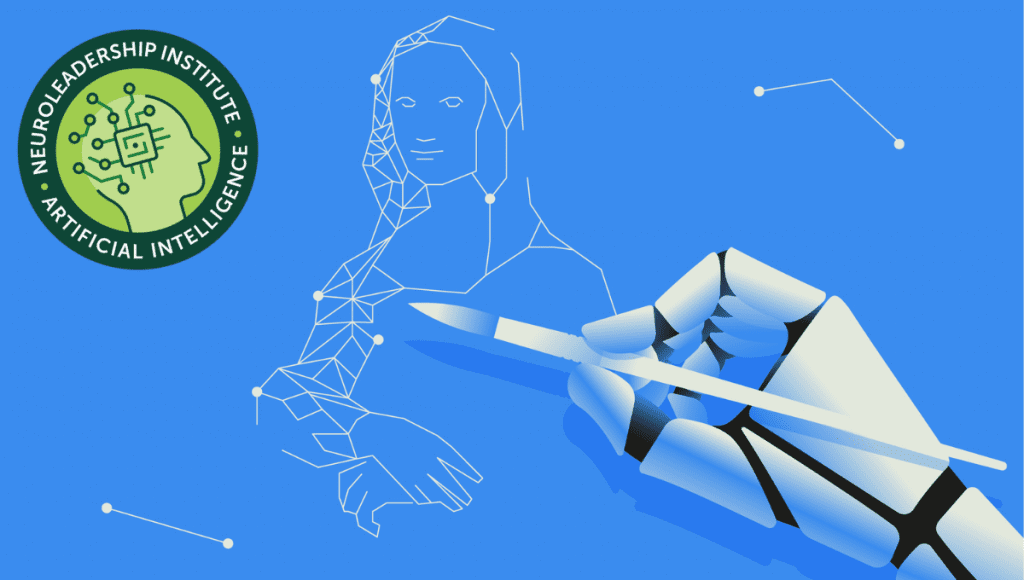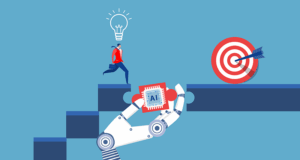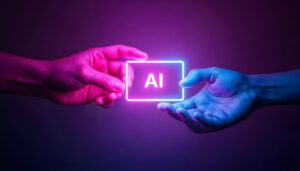Think of an artwork, a song, or a movie you enjoyed recently. Maybe it’s the unique mix of colors and brushstrokes, the way the melody swells and the tempo quickens, or a particularly poignant line that stirred a sense of awe and left a deep impression. The experience likely filled you with admiration for the creator’s genius, making you wish you could craft a masterpiece just like it.
For a long time, many people considered creativity a talent only a select few possess. But the reality is maestros like Picasso employ the same thought process as “ordinary” people to come up with their magnum opus, according to cognitive psychologists. Furthermore, research has shown people can become more creative with the right training. Creativity is a skill we can all develop. That’s great news not only for artists but also for those in the sciences and business.
Generative AI is now challenging another popular belief about creativity: that it’s a quintessential human trait. A student of machine learning and two business school grads, none of whom had a background in art, produced a painting using an algorithm that studied 15,000 portraits. Meanwhile, an anonymous songwriter created the viral song “Heart on My Sleeve” with simulated voices of artists Drake and The Weeknd. And IBM’s Watson computer picked out scenes from the movie “Morgan” for a trailer after analyzing 100 classic horror flicks.
How does this technology manage feats previously thought only possible for humans? There are surprising parallels between AI and human creative processes. The text-to-image generator DALL-E, for example, absorbs words and pictures from the internet. Then, it combines and recombines what it’s learned to generate original images.
Similarly, for humans, memory plays an essential role in creative thinking. Our default network — a set of brain regions associated with mind wandering, remembering, and more — becomes activated when we’re dreaming up something new. To imagine possible futures, we need to piece together what’s happened in the past with people, places, and events we know. It’s no wonder those who are instructed to recall memories in great detail produce significantly more creative ideas.
The true value of AI in creativity
An important distinction between AI and humans, though, is that only we have a built-in system that evaluates whether our ideas are good or bad, known as the executive control network. Being able to filter new things and choose the most resonant and relevant based on human criteria is what it means to be fully creative, and AI has novelty down but not selectivity, says Stanford neuroscientist David Eagleman. So, AI can spit out tons of new ideas, but it relies on the users to pick out what’s gold and what’s trash.
Algorithms also lack an understanding of the real world in the form of emotions and experiences. Without these guardrails, AI can generate ideas that are nonsensical or strange. If you type “the most wildly creative image imaginable” into DALL-E, you may get a picture of a male lion balancing on top of a female lion against the backdrop of a safari. Many people would agree that’s not what they’d call a wildly creative image.
That said, AI’s ability to churn out endless ideas is an asset humans can leverage to augment creativity. Some experts envision the future as one of human-AI co-creation, where everyone can be creative with the help of technology. While AI won’t necessarily turn you into the next Mozart or Steve Jobs, you can use it to boost your team’s creativity in the following ways:
- To get unstuck: When you run into a creative block, you can use AI to overcome it. Say you’re trying to come up with a marketing campaign to promote a product, and your employees aren’t proposing many novel ideas. You can ask an AI language model like ChatGPT to list all possible uses of your product to get your team talking and inspired. You may find an idea you can run with, or the AI responses could spark new thoughts.
- To get out of your own head: It’s normal for people to get used to approaching problems a certain way, but these habits can become barriers to innovating thinking. By suggesting ideas that are different from what we would normally consider, AI can help us break free from biases that stand in the way of creativity, such as functional fixedness, our inability to imagine uses beyond traditional ones, and the Einstellung effect, where our tendency to reuse the same solutions causes us to overlook new and better ones. If you notice your employees falling into these traps, encourage them to take their problems to AI and see what else they can come up with.
- To experiment more: We often dismiss ideas that seem impractical because we have limited time and resources to test them. AI eliminates that barrier by giving us a cost-effective and efficient way to experiment. For example, a designer who wants to try out a nontraditional layout for a magazine story can visualize and fine-tune it with an AI image generator before pitching it to the team. Next time you host a brainstorming session, ask your team to run with a few out-of-the-box ideas provided by AI, see how far you get, and discuss what you learn in the process. By doing this as a group and focusing on what you learn rather than what you accomplish, you can cultivate a sense of psychological safety, which makes employees feel safe to try new things.
The AI disruption brings many opportunities for us to revolutionize our workflow and improve our skills. By embracing a growth mindset, which allows us to view change as opportunities rather than obstacles, and learning more about the capabilities of AI, leaders can get the most out of this technology without losing sight of the unique strengths that humans bring to the table.






